We offer medical detox and multiple addiction treatment options in our
luxury treatment centres in Port Hope, Cobourg, and Ottawa.
7 Signs of Substance Abuse in the Workplace
Workplaces across Canada face a silent epidemic that affects productivity, safety, and employee wellbeing. Substance abuse in the workplace costs the Canadian healthcare system $8 billion annually, while 47,000 Canadian deaths link to substance-related issues each year. Recognition of warning signs becomes crucial because denial often prevents individuals from seeking help at abuse treatment centres. Early identification protects both individual health and organizational integrity, making awareness essential for supervisors, colleagues, and human resources professionals.
Key Takeaways
- Workplace stress and certain professions significantly increase substance misuse problems, with healthcare workers, construction employees, and hospitality staff showing higher vulnerability rates
- Corporate cultures that normalize alcohol consumption create environments where problematic drinking patterns develop unnoticed until they require professional intervention
- Physical and behavioral changes often appear gradually, making early detection challenging but crucial for preventing serious consequences
- Both employees and supervisors need clear protocols for addressing suspected substance abuse while balancing compassion with workplace safety requirements

Job Stress and Substance Misuse
Statistics Canada data shows 68% of Canadian workers deal with serious stress, and 27% call their stress extreme. Stressed employees turn to substances three times more than relaxed workers. Makes sense—alcohol and drugs temporarily escape anxiety, impossible deadlines, and job burnout.
Certain jobs create bigger addiction risks:
- Healthcare Workers: ER staff, nurses, and doctors develop alcohol addiction 15% more than average Canadians. Life-or-death decisions plus easy drug access spell trouble
- Construction Workers: Physical jobs and injuries drive 23% toward prescription drug addiction, starting with legitimate pain pills
- Finance People: Investment banking pushes cocaine use 4.2 times higher than normal, with 25% of executives having alcohol problems
- Restaurant Staff: Constant alcohol exposure creates 35% addiction rates versus 12% elsewhere
Night workers face 40% higher abuse rates. Fighting natural sleep cycles stresses your body, pushing people toward uppers during shifts and downers after work.
Job fears double addiction risks. Workers worried about layoffs drink and use drugs twice as much as people with secure jobs. They cope with anxiety through substances, then risk losing jobs due to poor performance.
Other Factors for Substance Misuse in the Workplace
Company drinking culture causes bigger problems than bosses think. Businesses celebrating with alcohol, weekly happy hours, or office beer taps make heavy drinking seem normal. Fun team activities can trigger addiction in vulnerable people.
Sales, law, and tech promote "work hard, party harder" attitudes. Big deals mean champagne. Court wins mean bar crawls. This makes spotting when celebration becomes dependency nearly impossible.
Work social situations trap people:
- Client dinners focus on wine and cocktails, making sobriety look unprofessional
- Conference networking events serve alcohol everywhere, forcing tough career choices
- Company retreats plan drinking activities that exclude non-drinkers
Remote work created fresh addiction problems. Home workers drink 35% more during work hours, making lunch cocktails routine without supervision. Missing daily face-to-face contact makes isolation worse.
Age gaps show different patterns. Under-35 workers use recreational drugs more but drink less problematically. Over-45 employees show opposite trends—less drug use but increasing alcohol problems built over years of work stress.
Money pressures at work trigger substance use:
- Companies cut benefits and remove employee help programs
- Skeleton crews work longer under more stress, pushing chemical relief
- Performance pay creates celebration and depression drinking cycles
- Job fears double substance abuse rates among worried workers
Professional jobs get mixed up with substance use. Lawyers say court stress needs alcohol relief. Ad people claim creativity requires altered states. High-achievers pop Adderall for productivity, anxiety pills for stress, and pain meds to keep working. Performance enhancement quickly becomes chemical dependency.

7 Signs of Substance Abuse in the Workplace
Catching the signs of substance abuse needs careful watching over time. One rough day doesn't equal addiction, but weird behaviour patterns deserve attention.
1. Frequent Tardiness or Unexplained Absences
Addiction eats time and energy needed for work. People with substance abuse show messy attendance reflecting personal chaos.
Monday sick calls jump 40% among drinking employees versus sober workers. Goes beyond hangovers—many need recovery time from weekend binges lasting through Sunday.
Lunch breaks stretch longer for drinking or drug use. Thirty-minute breaks become 90-minute disappearances, followed by sleepy or hyperactive afternoons.
Doctor visits multiply mysteriously. Some reflect real medical needs, others cover prescription drug seeking or recovery time. Multiple weekly appointments without clear reasons raise red flags.
2. Frequent Small Accidents
Poor coordination and focus cause more workplace accidents. Small incidents signal bigger problems that could become serious injuries.
Computer errors multiply when substances mess with hand-eye coordination. Typing mistakes, deleted files, and formatting problems increase before physical accidents happen.
Vehicle incidents rise sharply among substance users. Company car crashes, parking lot accidents, and traffic tickets link strongly to alcohol and drug problems. Fleet managers report 60% higher future accident rates after one substance incident.
3. Lack of Concern for Personal Appearance and Hygiene
Personal grooming drops as addiction takes priority. Clothing gets wrinkled and stained when laundry routines fall apart. Hygiene problems create obvious smells making colleagues uncomfortable. Hair and nails look neglected as basic self-care becomes too much work compared to substance use.
4. Extremely Low Productivity in the Morning
Morning performance shows what happened the night before. Addiction creates huge gaps between morning struggles and afternoon functioning.
Focus problems hit hard during morning hours when leftover substances cloud brain function. Simple 30-minute tasks might take hours through mental fog. Complex thinking stays nearly impossible until substances clear out.
Mood problems peak mornings when withdrawal affects patience. Colleagues tip-toe around morning grumpiness that signals overnight substance use and early withdrawal discomfort.
Coffee dependence goes extreme as workers try countering depressant effects with massive caffeine. Multiple coffee runs, energy drink stashes, and excessive caffeine pills suggest chemical compensation attempts.
5. Caginess About Personal Life
Secrecy becomes automatic when hiding substance abuse. Changes show in how people talk about non-work topics.
Social invitations get refused consistently as addiction consumes time and energy. Workers who enjoyed team lunches or after-work events suddenly become unavailable for everything social.
Personal questions trigger big defensive reactions over innocent topics. Asking about weekend plans or family might cause hostile responses from someone protecting substance use secrets.
Activity stories become vague and inconsistent. People struggle keeping fictional stories straight about time spent, so details about weekends or evenings change between conversations.
6. Physical Indications
Physical symptoms give clearest substance abuse evidence. Heavy drinking signs include flushed skin, broken blood vessels, bloated appearance, and raspy voice changes. Drug use shows through red eyes with weird pupils, sudden weight changes, needle marks, and frequent nosebleeds.
Withdrawal appears when people can't use: shaking hands, excessive sweating, nausea blamed on flu, and wild mood swings. Sleep problems show through obvious tiredness, dark circles, and confusion about basic details.
People with alcoholic face features try hiding changes with makeup, but physical signs get harder concealing as addiction gets worse.
7. Sudden Defensiveness and Overreaction to Criticism
Emotional control gets harder as substance abuse gets worse. Workplace interactions become inappropriate compared to what triggered them.
Constructive feedback causes hostile responses shocking supervisors and colleagues. Workers who used accepting suggestions gracefully might explode over minor performance comments. Defensiveness reflects deep addiction shame plus poor emotional control.
Paranoid thinking develops when substances mess with brain chemistry. Workers might see neutral comments as personal attacks or think colleagues plot against them. Normal workplace talk becomes threatening in their minds.

When to Seek Help
Catching warning signs is just step one. Employers and colleagues face tough choices about addressing suspected substance abuse while staying legally safe.
For Employers: Clear hiring policies provide needed frameworks. Employee assistance programs offer confidential resources encouraging help-seeking without job loss fears.
For Colleagues: Personal safety comes first when impaired workers create dangerous situations. Early concerns might respond better to caring conversations expressing support.
Professional Resources: The Canadian Centre for Addiction runs specialized programs for working professionals needing treatment while keeping jobs.
Recognition and early intervention save careers, relationships, and lives. A study by the Centre for Addiction and Mental Health (CAMH) found Canadians drink 50% more than global averages, making workplace awareness crucial.
Substance abuse grows in silence and denial. Breaking silence through education, compassion, and proper intervention creates recovery chances. Every workplace can help solve the problem.
FAQ
What is the meaning of substance abuse?
Substance abuse refers to harmful use of psychoactive substances, including alcohol and drugs, that causes significant impairment in daily functioning and relationships.
What is an example of substance abuse?
Common examples include drinking alcohol during work hours, using prescription medications beyond prescribed amounts, or consuming illegal drugs affecting job performance.
Can employers legally test employees for substance abuse?
Canadian employers can implement drug and alcohol testing in safety-sensitive positions but must follow strict legal guidelines and provide clear policies.
What should I do if I suspect a colleague has a substance abuse problem?
Focus on observable behaviours affecting work performance, document concerns, and report to supervisors when workplace safety is at risk.
How can companies prevent workplace substance abuse?
Effective prevention includes clear policies, employee assistance programs, stress management resources, and workplace cultures that don't normalize excessive drinking.





